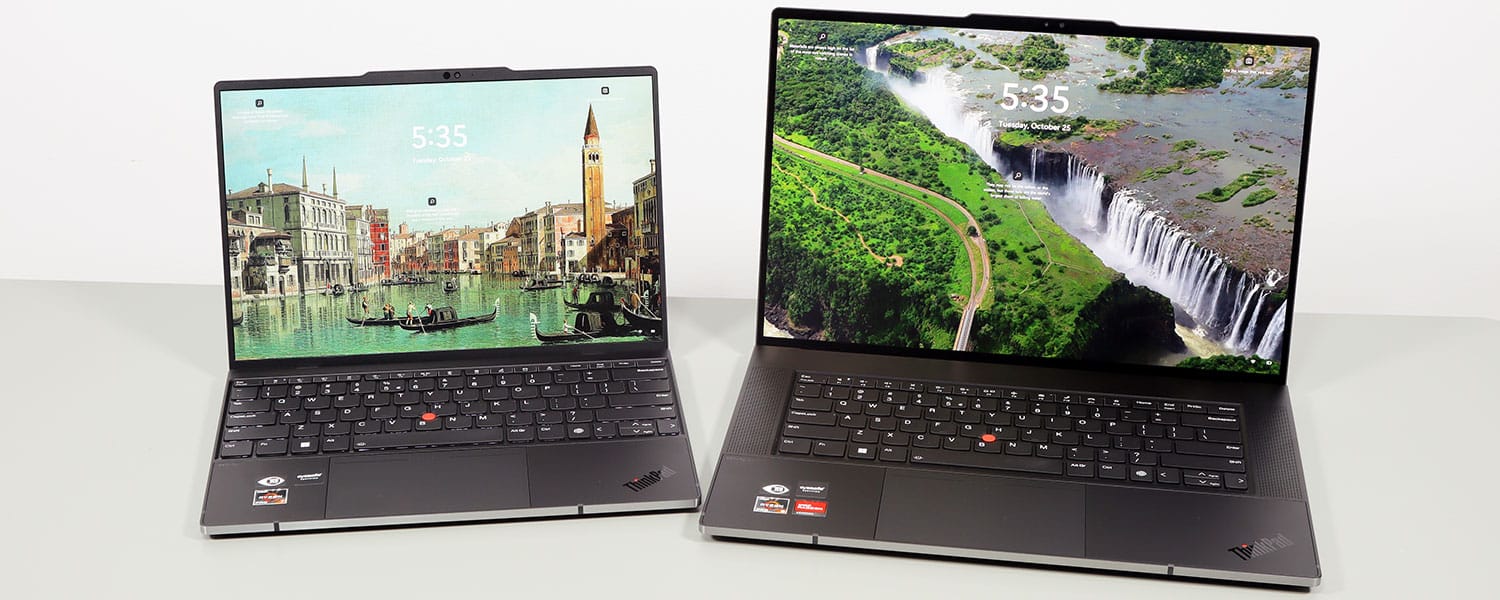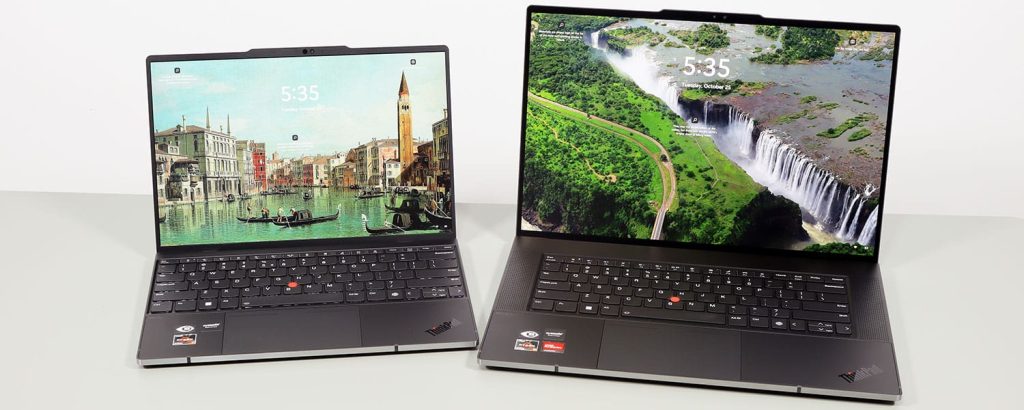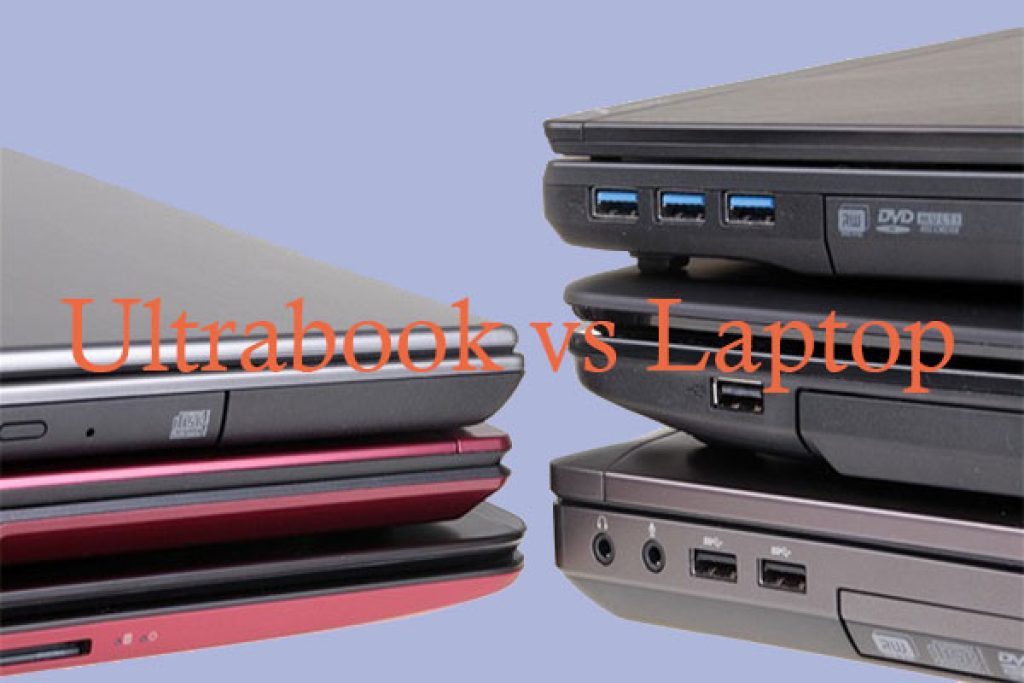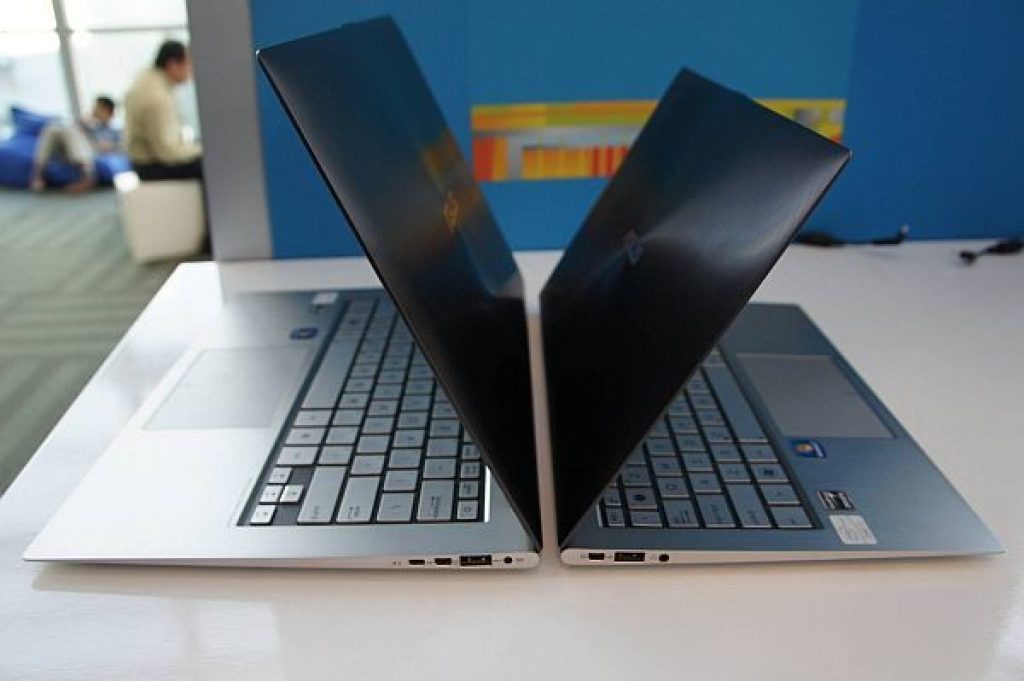What’s The Difference Between A Notebook And An Ultrabook?

As a tech enthusiast, I’ve often found myself pondering over the similarities and differences between various devices in the ever-evolving world of laptops. One question that frequently comes to mind is: what’s the difference between a notebook and an ultrabook? These two terms are often used interchangeably, but upon closer examination, their dissimilarities become apparent. In this article, we’ll explore the nuances between a notebook and an ultrabook, unpacking their distinct features and capabilities to help you make an informed choice when selecting your next portable computing companion.

This image is property of cdn.differencebetween.net.
Understanding The Basics
Defining a Notebook
A notebook, also commonly referred to as a laptop, is a portable computer that is designed to be used on the go. It typically consists of a keyboard, a screen, and a touchpad or trackpad for navigation. Notebooks are versatile devices that can be used for various tasks, ranging from basic web browsing and word processing to more resource-intensive activities such as gaming and video editing. They come in different sizes and configurations to suit different needs and preferences.
Defining an Ultrabook
An ultrabook is a specific type of notebook that is characterized by its slim and lightweight design. The term “ultrabook” was coined by Intel, who established a set of guidelines that manufacturers must meet in order to label their devices as ultrabooks. These guidelines include requirements for the device’s thickness, weight, battery life, and performance. Ultrabooks are designed to provide a balance between portability and power, making them ideal for users who prioritize mobility without compromising on performance.
The Core Differences
The main difference between a notebook and an ultrabook lies in their design and intended usage. Notebooks come in a variety of form factors and sizes, ranging from compact models that are easy to carry around to larger models with more powerful hardware. Ultrabooks, on the other hand, are specifically designed to be slim and lightweight, making them highly portable and suitable for users who are constantly on the move.
Depiction of Notebook
General Features of Notebooks
Notebooks typically feature a traditional clamshell design, with a screen that can be opened and closed on top of the keyboard. They are equipped with a variety of ports and connectivity options, including USB, HDMI, and headphone jacks, allowing users to connect peripherals and external devices. Notebooks also have built-in speakers and microphones, making them suitable for audio and video communication.
Versatility of Notebooks
One of the key advantages of notebooks is their versatility. They are designed to be used for a wide range of tasks, making them suitable for both personal and professional use. Notebooks can be used for web browsing, email, document editing, multimedia consumption, gaming, and much more. They offer the flexibility to switch between different applications and tasks seamlessly, allowing users to be productive in various environments.
Typical Uses of Notebooks
Notebooks are commonly used by students, professionals, and casual users alike. Students rely on notebooks for taking notes, writing papers, conducting research, and collaborating with classmates. Professionals use notebooks for tasks such as creating presentations, managing spreadsheets, and staying connected while traveling. Casual users enjoy the convenience of having a portable device for entertainment purposes, such as watching movies, listening to music, and browsing social media.
Depiction of Ultrabook
General Features of Ultrabooks
Ultrabooks are known for their slim and lightweight design, making them highly portable. They usually feature a unibody construction, which means that the entire chassis is made from a single piece of material, such as aluminum. This not only enhances the overall build quality but also contributes to the device’s sleek and stylish appearance. Ultrabooks often have a backlit keyboard for improved visibility and a high-quality display for enhanced visual experience.
Versatility of Ultrabooks
Despite their slim profile, ultrabooks are versatile devices that can handle a wide range of tasks. They are capable of running various software applications, including office productivity tools, creative software, and even some light gaming. Ultrabooks offer the flexibility to switch between different modes, such as laptop mode, tablet mode, and tent mode, thanks to their touchscreens and 360-degree hinges.
Typical Uses of Ultrabooks
Ultrabooks are popular among professionals who prioritize mobility and productivity. They are ideal for professionals who travel frequently and need a reliable device for work on the go. Ultrabooks are also favored by creative individuals, such as photographers and graphic designers, who require a portable and powerful device for photo editing and design work. Additionally, casual users who value aesthetics and portability often opt for ultrabooks for their everyday computing needs.
Notebook Tech Specs
Hardware Configurations
Notebooks come in various hardware configurations, allowing users to choose the specifications that best suit their needs. The processor plays a significant role in determining the performance of a notebook, with options ranging from basic dual-core processors to high-performance quad-core processors. The amount of RAM determines the device’s multitasking capabilities, while the storage options can include traditional hard drives or faster solid-state drives (SSDs).
Software Capabilities
Notebooks typically run operating systems such as Windows, macOS, or Linux. These operating systems provide a user-friendly interface and access to a wide range of software applications. Notebooks can handle a variety of software, including office productivity suites, web browsers, media players, creative tools, and even resource-intensive applications like video editing software and 3D modeling software.
Memory and Storage Options
The amount of memory (RAM) and storage capacity are important considerations when choosing a notebook. Higher RAM allows for smooth multitasking, enabling users to run multiple applications simultaneously without experiencing lag or slowdown. Storage options can vary from traditional hard drives (HDDs) to faster and more reliable solid-state drives (SSDs). SSDs offer faster data access and improved durability, making them a popular choice for notebooks.

This image is property of www.ultrabookreview.com.
Ultrabook Tech Specs
Hardware Configurations
Ultrabooks are designed to provide a combination of power and portability. They often feature the latest generation processors, which offer improved performance and energy efficiency. Ultrabooks usually come with a minimum of 8GB of RAM, allowing for smooth multitasking. As for storage, ultrabooks typically employ SSDs, which provide faster boot times and file access compared to traditional hard drives.
Software Capabilities
Ultrabooks run the same operating systems as notebooks, such as Windows, macOS, and Linux, giving users access to similar software capabilities. Whether it is office productivity software, creative tools, or multimedia applications, users can expect an ultrabook to handle a wide range of software with ease. The energy-efficient processors and fast storage options of ultrabooks contribute to a seamless computing experience.
Memory and Storage Options
Ultrabooks often come with a minimum of 8GB of RAM, which is sufficient for most daily tasks. Depending on the specific model and manufacturer, ultrabooks can offer up to 32GB or more of RAM for users who require higher performance. In terms of storage options, ultrabooks typically utilize fast and reliable SSDs. The storage capacity can range from 256GB to 2TB, allowing users to store a significant amount of data and access it quickly.
Performance Comparison
Speed and Efficiency
When comparing the performance of notebooks and ultrabooks, it is important to consider both speed and efficiency. Notebooks, especially those equipped with high-performance processors and ample RAM, can handle resource-intensive tasks such as gaming and video editing with relative ease. Ultrabooks, while still capable of handling demanding applications, may have slightly lower performance due to their focus on energy efficiency and slim design.
Battery Life
One of the key advantages of ultrabooks is their long battery life. Ultrabooks are designed to be energy-efficient, allowing users to work or enjoy entertainment on the go without the need for frequent charging. The combination of energy-efficient processors, power-saving features, and SSD storage contributes to extended battery life. Notebooks, on the other hand, may have shorter battery life depending on their hardware configurations and power consumption.
Screen Resolution and Graphic Capabilities
Both notebooks and ultrabooks offer a range of screen resolutions, from standard HD (1366×768) to full HD (1920×1080) and even higher. The screen size and quality can vary between models and manufacturers. Ultrabooks often prioritize high-quality displays with vibrant colors and wide viewing angles. In terms of graphic capabilities, notebooks equipped with dedicated graphics cards can provide better performance for gaming and content creation compared to most ultrabooks, which rely on integrated graphics.

This image is property of www.partitionwizard.com.
Physical Attributes
Size and Weight
Notebooks come in a variety of sizes and weights, depending on the model and form factor. From compact models with 11-inch screens to larger models with 17-inch screens, users can choose the size that best suits their needs and preferences. Notebooks also vary in weight, with lighter models being more portable and easier to carry around. Ultrabooks, on the other hand, are specifically designed to be lightweight and slim, weighing less than traditional notebooks and offering enhanced portability.
Material and Build Quality
Notebooks are constructed using a combination of materials, including plastic, metal, and carbon fiber. The build quality can vary between different models, with premium notebooks often featuring high-quality materials and sturdy construction. Ultrabooks, however, are known for their premium build quality and sleek design. They are typically made from high-grade materials such as aluminum, magnesium alloy, or carbon fiber, ensuring durability and a premium feel.
Design Aesthetics
Notebooks come in a range of designs, from traditional and functional to sleek and modern. Manufacturers often offer various color options and finishes to cater to different preferences and styles. Ultrabooks, on the other hand, place a strong emphasis on aesthetics and often feature sleek, minimalist designs. The slim profile, slim bezels, and premium materials used in ultrabooks contribute to their elegant and modern appearance.
Pricing and Value
Comparing Price Points
When it comes to pricing, notebooks and ultrabooks can vary significantly depending on the brand, specifications, and features. Notebooks generally offer a wider range of price points, making them more accessible to users with different budgets. Higher-end notebooks with powerful hardware and premium features can be quite expensive. Ultrabooks, on the other hand, tend to be more expensive due to their focus on slim design and premium build quality.
Assessing Value for Money
The value for money of a notebook or an ultrabook depends on the specific needs and preferences of the user. Notebooks offer a wider range of options, allowing users to choose the specifications that best suit their requirements and budget. Ultrabooks, while typically more expensive, provide a premium experience with their slim design, lightweight construction, and high-quality materials. Users who prioritize aesthetics and portability may find the extra cost of an ultrabook worth it.
Cost of Ownership and Durability
In terms of cost of ownership, notebooks and ultrabooks can be similar. Both require regular maintenance and may require periodic software updates and hardware upgrades over time. Durability can vary depending on the specific brand and model, but in general, both notebooks and ultrabooks are designed to withstand everyday use. Ultrabooks, with their focus on premium build quality, often offer enhanced durability compared to traditional notebooks.

This image is property of www.ultrabookreview.com.
Brand Comparisons
Popular Notebook Brands
There are several well-known brands in the notebook market, each offering a range of models to cater to different needs and preferences. Some of the popular notebook brands include Dell, HP, Lenovo, Apple, Asus, and Acer. These brands have established themselves in the market by consistently delivering reliable and high-quality notebooks with a range of features and price points.
Popular Ultrabook Brands
When it comes to ultrabooks, there are several brands that are highly regarded for their design, performance, and build quality. Some of the popular ultrabook brands include Dell XPS, HP Spectre, Lenovo ThinkPad, Apple MacBook, Asus Zenbook, and Microsoft Surface. These brands have gained a reputation for producing premium ultrabooks that offer a combination of power, portability, and aesthetics.
Brand Reputation and Reviews
The reputation of a brand plays a significant role in the decision-making process. Established brands with a strong reputation for quality and customer support are often considered more reliable. User reviews and professional reviews can provide valuable insights into the performance, reliability, and overall experience of a particular notebook or ultrabook model. It is advisable to research and compare different brands and models before making a purchase decision.
Decision Making
Choosing Between a Notebook and Ultrabook
When deciding between a notebook and an ultrabook, it is essential to consider your specific needs and preferences. Notebooks offer a wider range of options in terms of size, performance, and price, making them suitable for users with different requirements and budgets. Ultrabooks, on the other hand, prioritize portability and aesthetics, making them ideal for users who value slim design and premium build quality.
Determining What’s Best for Your Needs
To determine what is best for your needs, consider factors such as the intended usage, portability requirements, performance expectations, and budget constraints. If you require a device for demanding tasks such as gaming or video editing and are not too concerned about portability, a notebook with a dedicated graphics card and ample processing power might be the better option. However, if you prioritize mobility and are willing to invest in a premium device, an ultrabook may better suit your needs.
Pros and Cons of Each
Notebooks offer a range of pros, including a wider variety of options, higher performance potential, and more affordable price points. However, they may be bulkier and heavier compared to ultrabooks. Ultrabooks, on the other hand, excel in portability, sleek design, and premium build quality. They offer a balance between performance and mobility but can be more expensive. It is important to weigh these pros and cons based on your specific requirements to make an informed decision.

This image is property of technewsdaily.com.







